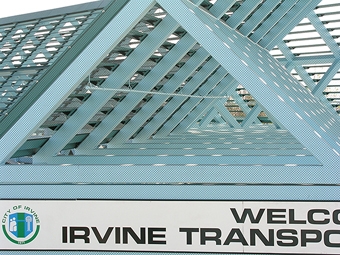Many commercial business facilities and growers suffer from pest bird infestation. Flocks of birds will nest and roost on or in the property, creating all sorts of damage—both to the facility itself and to the products housed therein. Birds can also interfere with workers in a warehouse or customers in a large store. Bird droppings can create slip-and-fall hazards on walkways and loading docks, resulting in a huge legal liability, should someone suffer an injury.
One of the most effective ways to get rid of annoying pest birds is through the use of Bird Netting. Fortunately there are many types of bird netting, each with its own set of advantages geared to exclude specific types and sizes of birds, as well as the application and venue. So which bird netting works best for your application? Some guidelines:
Heavy-Duty Polyethylene Bird Netting
Made from a U.V.-stabilized polyethylene mesh, Heavy-Duty Poly netting is ideal for use in excluding pigeons, sparrows, gulls, starlings and crows from large outdoor or indoor areas. We’re talking warehouses, big box stores, aircraft hangars and the like. This netting comes in three mesh sizes: 2-inch, 11/8-inch, and 3/4-inch. For large birds like gulls, you would probably need the 2-inch mesh; for smaller birds like sparrows, you’d go with the 3/4-inch mesh. This type of netting will hold up for years in harsh weather conditions. One manufacturer offers a 10-year guarantee. Their heavy-duty bird netting is ISO 1806 and 9001protocol mesh tested, flame resistant, rot-proof, and waterproof. It’s also non conductive, which means you can use it around antenna arrays and other electrical equipment.
No Knot Bird Netting
Easy to handle and surprisingly light, No Knot Bird Netting is an effective deterrent in keeping pigeons, sparrows, gulls, starlings and crows from outdoor or indoor areas. In fact, this netting is roughly 70 percent stronger than conventional knotted poly netting and nearly 30 percent lighter. It also boasts a higher melting point than ordinary knotted poly netting. Another big plus with No Knot netting is that you don’t have to pull it into shape, something you need to do with other types of netting. Like its heavy-duty cousin, No-Knot netting comes in several mesh sizes, including a 3/4-inch mesh to stop smaller birds like starlings. This netting is fabricated using a multi-strand polypropylene fiber, which is resistant to heat and a number of chemicals, No Knot netting meets ISO 1806 and 9001 Protocols and won’t rot, absorb water, or mildew.
Ultra Net Plastic Bird Netting
This lightweight plastic mesh netting is ideal for blocking out pigeons, sparrows, gulls, swallows, and crows from bushes, gardens, vines and small trees. The low-profile netting is fabricated out of resilient U.V.-protected polypropylene. You can choose from 3/4-, 1/2-, and 1/4-inch mesh sizes, depending on the bird size. To exclude pest birds from vegetable gardens, carefully wrap each plant in netting. You can also just suspend the netting over the entire garden. To protect blueberry bushes and grape vines, raise the netting 6 inches or so over the bush or vine. This will keep birds’ beaks and claws from getting at these plants. You can also suspend this netting on poles around a tree or large planted section. If birds are invading your fruit trees, cut the netting one-foot wider than the diameter of the tree’s crown and tie the netting until it is taut.
Before installing any bird netting on buildings and structures, make sure the surface is clean and dry. Remove bird droppings, feathers and nesting materials. Use commercial disinfecting cleaning agents to prevent exposure to any of the 60 known airborne diseases caused by birds.
You should also use eye and respiratory protection if the area is heavily contaminated with bird droppings.
For additional advice on how to properly install bird netting on your commercial property, consult an expert like the folks at Bird-B-Gone.











